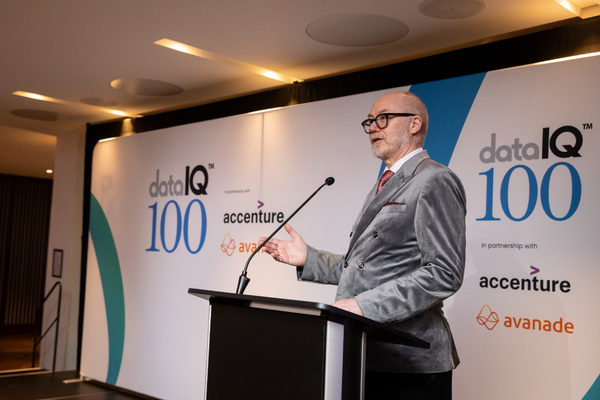Laddering up to AI: Is your business ready?
Right now, organisations across the board are exploring how artificial intelligence (AI) can help future-proof what they do and provide a real competitive edge, particularly for developing uncharted insights or for designing consumer-led marketing output.
But AI is, in some ways, the 2018-19 variant of the rush to big data that has characterised everyone’s business thinking since 2012. This means some companies will have jumped aboard without really understanding what they’re doing, why they’re doing it and, perhaps most importantly, before they’ve laid the groundwork to actually make it viable.

So, the first question you should ask is why you want to invest in AI in the first place. Then take time to understand the need you are addressing, otherwise you will just be diverting resources from other areas rather than fixing fundamental business issues.
The second point to understand is whether AI is being used to develop new products and services or to improve existing processes? In either case, the right leadership, structure, skillsets, culture and ways of working need to exist before AI can really thrive.
In essence, most businesses aren’t yet in a position to deploy AI effectively. They expect too much without understanding all the (human-led) work that needs to be done to prepare their data and their processes first.
While “laddering up” to AI does take time and resource, there is a clear route:
Step one: robust data
A strong data foundation is the fundamental first step to realising the full power of AI. You need robust data infrastructure and storage and an information architecture with access to martech systems so you can begin to learn and action what you know. This is amplified by having significant volumes of data enriched with real-time updates to aid future learning.
Step two: insight analytics
Once you have robust data in place, the next step should be to ask, what are the most business-critical things you should be doing with it? Typically, traditional analytics can drive impactful insights and help to create a data strategy driven by consumer insight to realise marketing efficiencies and improve the customer journey. This will deliver tangible business outcomes, yet we see many companies struggle to analyse the data they hold effectively.
Limiting factors may be down to time, resource capability and structure. But it would be unwise to even consider adopting an AI strategy until you have streamlined your analytics capabilities and culture.
Step three: empowered data decisioning
Having put the right infrastructures and resources in place, you will be able to pull data from various sources to make it work together. A key opportunity lies in building real-time decisioning into your approach across an omni-channel environment.
Here, platforms such as Pega, Salesforce Journey Builder and Adobe Campaign make it possible to execute analytics with data-led logic, which is the first step to building a logic-based engine. This is a vital area and - to reiterate the earlier point - it can only meet its potential if you focus, evolve and enable your existing architecture and marketing resources before developing advanced deep learning.
Step four: machine learning
The first three steps comprise the building blocks for AI and should therefore be considered a business priority if you wish to become truly future-ready. However, what many companies consider to be AI would really be better defined as the machine learning stage – rules-based analysis to orchestrate a whole greater than the sum of its parts.
Embedding machine learning into your company’s processes allows data science teams to explore what more can be achieved, enabled by data-powered technology. Machine learning algorithms can evaluate and mine data at speed, bringing together what may appear to be disparate elements within the business and identify previously uncharted insights.
Step five: AI
The final step is to develop machine learning-layered neural networks, which overlay natural language processing and software/decisioning to execute intelligent actions. Chatbots and virtual assistants are good examples: they continuously learn from what they’ve done before and can respond with an approximation of human intelligence. Other use cases would include supporting the development of new apps, advanced services and image recognition.
It’s important to remember AI isn’t a silver bullet and it’s up to responsible partners to set sensible expectations and workable timelines. If something sounds too good to be true, it probably is. As we’ve seen, there’s a huge amount of groundwork that must be completed before it’s possible to build something like a virtual assistant.
In many cases there may actually be a simpler, less time-intensive solution: for example, using predefined decision trees could be a much more cost-effective way to manage inbound calls. AI may be more sophisticated than ever, but often it’s worth taking a step back to ask if your business really needs it in the first place.
Extracting maximum value from AI means having all the resources in place to act on it. It’s all very well having algorithms in place to create thousands of individually tailored pieces of creative content, but what’s the point if you don’t have the means or the capacity to actually deliver them to customers?
AI and machine learning are powerful tools when used in considered ways to drive defined results. Ultimately, though, it’s the human-led AI strategy that determines the potential, combined with the business’s willingness to put in the time and investment upfront that will dictate the lifetime value. It’s best to always remember that AI begins and ends with people.
Robert Goodwin is data strategy partner at Wunderman and is tasked with delivering actionable data insight, omni-channel strategy planning, martech and data consultancy expertise driving marketing and business effectiveness for clients. Robert has an extensive background both within media and creative agencies as well as client-side at BA and Sky. He has experience spanning virtually all sectors, working with numerous global brands including O2, Shell, BT, Samsung and Selfridges.
Did you find this content useful?
Thank you for your input
Thank you for your feedback
You may also be interested in
DataIQ is a trading name of IQ Data Group Limited
10 York Road, London, SE1 7ND
Phone: +44 020 3821 5665
Registered in England: 9900834
Copyright © IQ Data Group Limited 2024




